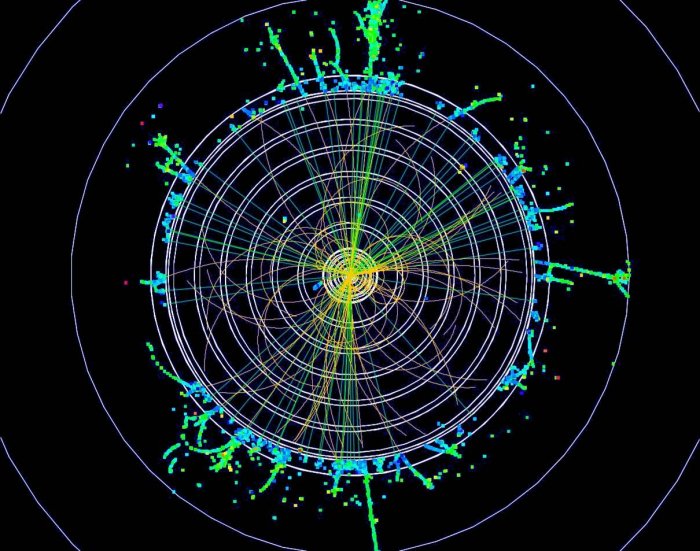Research Director's Report
12 June 2008
New US Strategic plan for particle physics recommends restored participation in ILC R&D
This month's Research Director's Report was written by Jim Brau, co-chair of the Worldwide Study, regional detector contact for the Americas and member of the P5 panel
This past year, our global collaboration was derailed by funding cuts for the ILC in the UK and in the US. Anyone who has seen through a large project knows there are ups and downs, obstacles and difficulties to overcome, and only through continued dedication and perseverance will the final goals be achieved. Our dedication and perseverance have been challenged, but the science has not changed: particle physics will need a high-energy linear collider. In the US, a new strategic plan for the funding agencies restates the importance of a lepton collider to advances in particle physics.
 Cover image of John Jaros' talk on "ILC Physics and Detectors" presented at one of the P5 meetings at Fermilab, last February. Cover image of John Jaros' talk on "ILC Physics and Detectors" presented at one of the P5 meetings at Fermilab, last February.(Image : Norman Graf) |
The US High Energy Physics Advisory Panel (HEPAP) approved a new ten-year US strategic plan on 29 May. Among its recommendations is support for accelerator and detector R&D for the ILC in any of the studied federal funding scenarios. The report is available here.
About one year ago, Dr. Ray Orbach, Director of the US DOE Office of Science, asked the US High Energy Physics Advisory Panel to re-engage in a discussion of the future of particle physics in the US. While recognising the great promise of the ILC, the publication of the ILC Reference Design Report led Dr. Orbach to consider the hurdles which must be overcome to realise the ILC. He concluded that it could take until the mid-2020s for first ILC collisions, and asked HEPAP to open a new discussion of the near-term future of the field of particle physics in the US.
Last autumn, Dr. Dennis Kovar, acting Associate Director of the Office of High Energy Physics, charged the HEPAP Subpanel P5 (Particle Physics Project Prioritization Panel) to develop a plan for the US High Energy Physics programme.
Following several months of discussion on all aspects of the US high-energy physics programme, and its role in the international high-energy physics enterprise, P5 reaffirmed the importance of the energy frontier as one of three central areas of the field (together with the intensity and cosmic frontiers), re-expressed its opinion that the LHC is currently the highest priority of the field, and reiterated and supported the global consensus that a lepton collider will be essential to follow up on LHC discoveries. It notes that the ILC energy range is expected to be what is needed based on Tevatron, LEP, and SLC evidence. Furthermore, the report states that "the host will be assured of scientific leadership at the Energy Frontier," reminding the reader why three regions of the world are interested in serving as the host for this global project. The panel also recommends an R&D programme for detector technologies to support a major US role in preparing for physics at a lepton collider.
The strategic plan outlines a broad programme for the US, designed at four different funding scenarios, and coordinated with the international programme. More is possible at the higher-level scenario, of course. The ILC effort is advanced in the plan for all scenarios. The US role within the GDE will be restored to a level comparable to what it was a year ago, and continued development of detectors for the ILC is also recommended. In addition, the panel recommends support for accelerator R&D on warm options for a lepton collider.
Fermilab's future was a significant concern in the panel's charge; R&D on a high-intensity proton source based on superconducting RF is recommended by the panel. Such a source would enable a staged and evolving neutrino physics programme at Fermilab. If the proposed DUSEL (Deep Underground Science and Engineering Laboratory) in South Dakota gets approved and built, the source could provide in excess of 2 MW of power to produce a world leading neutrino beam to the new lab. In addition, new fixed target experiments are foreseen for Fermilab. Half of the US particle physics community is now working on the LHC at CERN, and Fermilab would support this energy frontier effort, while conducting a local physics programme at the intensity frontier.
We will soon be back on the rails in the US, with determination to realise our international vision of a linear collider. About two hundred years ago, John Adams, an early leader of a new nation in North America, is reputed to have said: “Patience and perseverance have a magical effect before which difficulties disappear and obstacles vanish.” We understand this concept, and we intend to reach our goal of the Terascale electron-positron linear collider.
-- Jim Brau
